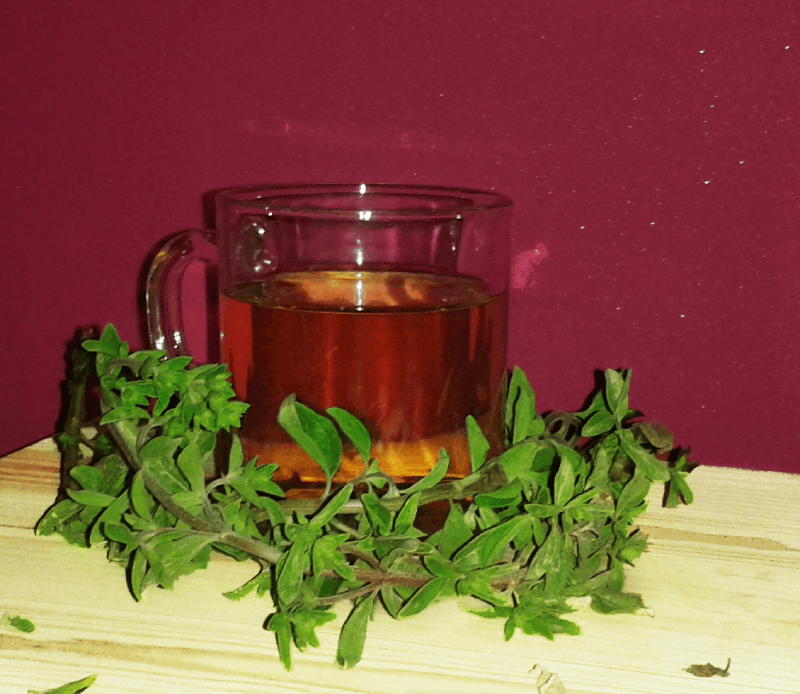Being located in the center of the Mediterranean sea, our bat has grown with fresh marjoram at the tips of her wings. Today, we decided to toss this herb in some boiling water and find out what comes out. This herb has a citrus and wood flavor, we usually love it with fish, however, it creates a warm and yet refreshing drink. Rather interesting I would say, so let’s see what benefits this herb holds and what secrets are hidden in its tiny leaves
What is Marjoram?
Origanum majorana is a very close relative of oregano as the name might suggest and in the same family mint and basil are a part of. Marjoram is a cold-sensitive perennial herb and is indigenous to the Mediterranian region, North Africa, and Western Asia making it a very common taste in Mediterranean dishes. Its bush can grow up to 60cm and it has small oval leaves that are smooth and hairy with tiny flowers at the tips of its stems.
The most common components of marjoram’s essential oils are terpinene (found mainly in marjoram and cardamom) and terpineol (found in pine oil and also in cardamom), borneol, camphor, and pinene. Marjoram is mainly composed of carbohydrates and dietary fibers, it is extremely rich in Calcium, Potassium, Iron, Magnesium, and Vitamins A, C, B6, and K.
Health Benefits
Like many herbs and fruits, marjoram is rich in antioxidants and has anti-inflammatory as well as antimicrobial properties. This of course makes this herb beneficial for our health, as always, we will try and take a look at what are the benefits marjoram is most famous for.
- Promotes hormonal health
- Provides anxiety and stress relief
- Calms headaches
- Helps to fight infections
- Reliefs pains, cramps, and spasms
- Helps against colds, coughs, and runny nose.
- Improves appetite and digestion
- Helps relieve gas problems which may lead to more severe issues
- Promotes urination that will help cleanse your body
- Helps to control diabetes
- Promotes a healthy nervous system
- Reduces blood pressure
Side Effects
As always it is very important to consult your doctor before you start any major diet change, especially if you have any conditions or are on any medication. However, as with most herbs and spices, in small dozes marjoram is rather safe to digest, however, we always suggest it’s better to be safe than sorry! Unlike the other plants we took a look at, it is incredibly hard to find a list of the allergic reactions this plant can cause, however, what keeps coming across is that marjoram shouldn’t be digested in large doses for a long period of time, especially if it’s being taken as a medicinal remedy. It is also not recommended during pregnancy, breastfeeding, or before surgery.
Making the Tea
- 1 teaspoon fresh marjoram
- 1 cup of water
If you are using dried marjoram 1/4 of a teaspoon is enough as the flavor is way stronger. Doing an infusion is always simple with herbs. Simply bring the water to a boil, leave for a couple of seconds to settle and cool slightly, add the leaves and leave to steep. As with all infusions add more herbs or leave longer for a stronger flavor and less for a milder taste. You can always add some honey for sweetness and you may want to try it out with milk. You can also mix some mint or oregano to boost the flavor… or both if you want to be adventurous, most herbs blend well together! Hope you give this herb a go and let us know your experience with it!

